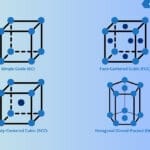Optics is simply the study of light and its interactions with the physical world or matter. Optics aims to explore the mannerisms of light , its properties, as well as the numerous physics phenomena associated to it. Optics is another one of those physics phenomena that actually plays a vital role in understanding the mysteries of the universe, all the way from the smallest of particles to the vast reaches of space.
The origin of optics dates way back to ancient civilizations, during which some early scholars began forming theories about light and vision with experiments and observations. However, it was not until the Islamic Golden Age that major advancements were properly made. Ibn Al-Haytham for example, conducted some groundbreaking experiments in regards to light and optics. Moving onto the renaissance, with scientists such as Galileo Galilei which we were all taught in school, he proposed the idea of our solar system actually being heliocentric. In the 17th century, thanks to Sir Isaac Newton’s experiments with lenses and prisms, began a major turning point in the study of optics, paving the road to current understanding we have of optics today.
In todays scientific landscape, optics is an indispensable tool. It is the very foundation of various technologies as well as fields like medicine, telecommunications, and astronomy. What ever field you delve into, understanding the principles that govern optics is crucial, especially for the development of cutting-edge devices and instruments that shape the modern world.
Fundamentals of Light in optics
Light is a form of electromagnetic radiation made up of elementary particles with no mass such also known as photons. Photons are a bit complex to categorize as the exhibit both wave-like and particle-like properties. Thanks to this duality, many of the different behaviors and interactions of light to different situations can be explained.
Light waves can be characterized by their wavelength (λ) and frequency (f). Wavelength and frequency are inversely proportional, meaning that when one increases, the other decreases and vice versa. This relationship is highlighted in the equation below:
c = fλ
Where:
c = speed of light
f = frequency
λ = wavelength
An important figure to know is the speed of light in a vacuum. This is denoted by (c) and is approximately 3×108 (m/s). This is known as a constant, and it will play a vital role in the several optical calculations that takes place as we go deeper into optics.
Types of optics
There are two main types of optics. We have Physical optics, which is concerned with the wave-like nature of light and geometrical optics, which if you’ve guessed, is concerned with the particle-like nature of light.
Physical optics is further divided into diffraction, interference, and polarization. Diffraction is simply put, the bending of light around an object as well as the spreading of light when it passes through a small opening. The light is described to be diffracted. Interference is an occurrence where two or more light waves overlap, which can lead to the reinforcement of cancellation of certain areas. Polarization on the other hand is involved with the alignment of the oscillations of light waves in a certain direction. Polarized light can be produced by the use of either filters or crystals. These two items allow only specific light waves that oscillate in a certain plane to pass through. The equations for diffraction and interference are given below:
Diffraction:
$$
I(\theta)=I_0\left(\frac{\sin (\beta)}{\beta}\right)^2
$$
Where:
I = intensity of waves
β = 3π/2
θ = the angle
Interference:
$$
I(\theta)=I_1+I_2+2 \sqrt{I_1 I_2} \cos (\delta)
$$
Where:
I = intensity of individual waves
δ = phase difference
θ = the angle
Geometrical optics concerns the reflection, refraction, and dispersion of light. Reflection occurs when light goes in contact with a surface and is made to bounce back at an angle. Following the law of reflection, the angle of incidence is always equal to the angle of reflection. Refraction is the bending of light as it goes through one medium to another. The bending is due to the different refractive index that each medium has. Snell’s Law gives us the relationship between the angles of incidence and angle of refraction with respect to the refractive index of each medium. Different mediums have different refractive indexes, but so does light. Dispersion is the separation of light into its structural colors due to the variation in refractive index. A popular tool used to demonstrate dispersion is a prism. When light travels through a prism, a spectrum of colors comes out of the other side.
Application of optics
From the glasses we wear to cameras on our smartphones, optics has various applications in our everyday lives. Let us take a look at some of the important applications that couldn’t exist without optics.
Glasses or corrective lenses are a prime example of leveraging the principles of optics. These tools alter the path of light entering our eyes. They help people who have refractive errors and compensate for their lack of proper vision in order to see more clearly. These tools can be made thicker or thinner all in accordance with the unique case.
The cameras on our smartphones rely very heavily on optics for capturing light. After focusing the light, several sensors work hand in hand to create high-quality images that we are able to view on our screens.
Laser technology is another optically depend tech. Lazers normally are responsible for concentrating light such as a laser pointer, which utilizes optics to generate a highly concentrate beam of light. Application of lasers includes diverse fields. These include surgery, cutting, welding materials, communication, and research to name a few.
Total internal reflection (TIR) is a very important optics topic which can be seen in the production of Fiber optics. Fiber optics is almost single handedly responsible for the revolution of telecommunications. It enables the transmission of data through very thin and flexible fibers made up of either glass or plastic. Now TIR ensures that there is little to no signal loss when data is being transmitted, making and integral part of modern communication networks.
Medical advances have also been made thanks to optics. Medical imaging techniques such as X-rays, microscopy, and endoscopy all have optics as a fundamental. Techniques such as the Optical coherence tomography (OCT) uses low-coherent light to produce a high-resolution image with almost pin point accuracy of various biological tissues, helping in fast, easy, and overall better diagnosis.
In conclusion, optics is an intriguing field of physics that dissects the behavior of light and it’s interacting with matter. All the way from the historical foundations laid by our early scholars to the all the modern day applications in medicine, telecommunications, gadgets, and several other technologies, optics will continue to give us a better understanding of the world around us. By understanding the fundamentals of light, different types of optics, and its important real world applications, we can take a step into the vast world of optics that illuminates our existence.
Frequently asked questions (FAQs)
Q1 – What is optics in physics?
Optics in physics is simply the study of light and its interactions with the physical world or matter.
Q2 – What are the types of optics?
There are two main types of optics. We have Physical optics, which is concerned with the wave-like nature of light and geometrical optics, which if you’ve guessed, is concerned with the particle-like nature of light.
Q3 – What is light in optics?
Light is a form of electromagnetic radiation made up of elementary particles with no mass such also known as photons.











